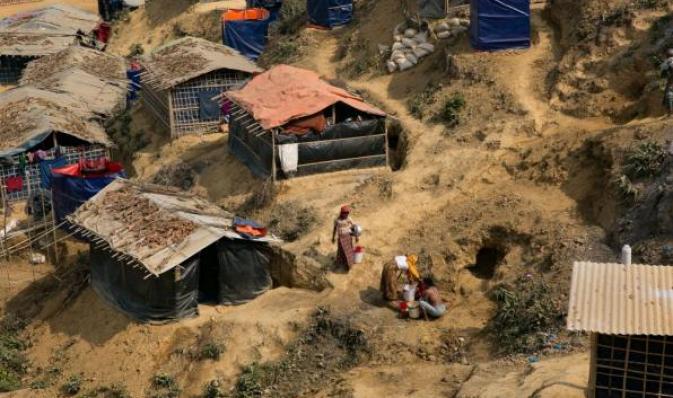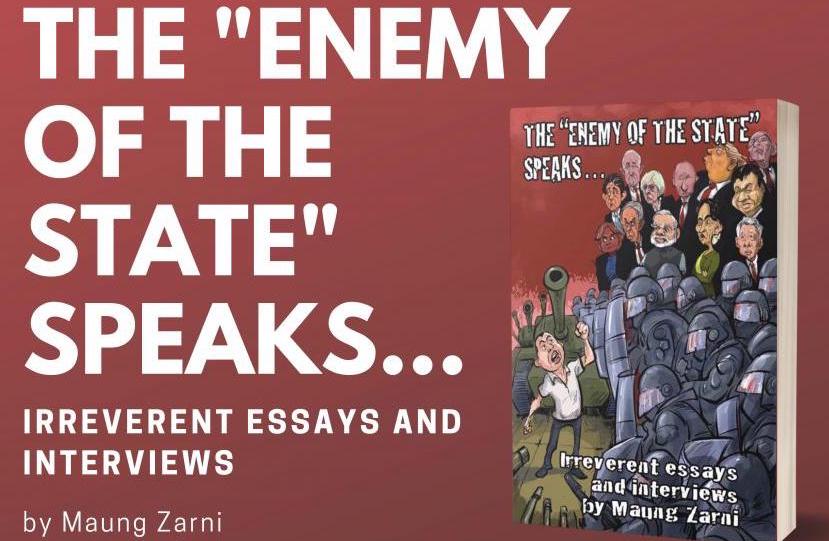
The situation of the Rohingya in Bangladesh and Myanmar continues to darken as the brutal Burmese campaign against them, one the UN has called a “textbook case of ethnic cleansing,” seems set to fade from international attention. Nearly 700,000 are now living in squalid refugee camps in Bangladesh while those still within Myanmar are subject to a two-pronged campaign of destruction. On the ground they continue to be victims of violence, while in the Burmese public sphere their history and identity is being systematically erased. This is a frightening indication of the ease with which states can commit genocidal crimes with relative impunity.
Is Repatriation Desirable?
On November 23, a deal was reached between Myanmar and Bangladesh for the repatriation of several hundred thousand refugees, a deal which has received international criticism and has recently been put on hold over fears that conditions in Myanmar are not suitable for their return.
Inside Myanmar, the evidence points to ongoing ethnic cleansing. Thousands of Rohingya arrived in Bangladesh in December and Januarywith most citing “forced starvation” at the hands of Burmese authorities as what has caused them to leave, according to a February 7 report from Amnesty International. The refugees also allege confiscation of Rohingya property and continued abduction, rape, and sexual assault of Rohingya women.
Meanwhile, the Pyithu Hluttaw, the House of Representatives in the Burmese parliament, met on February 5 to declare, in contradiction to well-documented evidence, that the Rohingya have never been a recognized ethnic minority in Myanmar.
“The name Rohingya was never mentioned in any of the census lists, and it is not included among the list of 135 ethnic nationals,” said Union Minister for Labour, Immigration, and Population U Thein Swe, in response to a question raised by U Tin Aye, a representative from Metmung in Shan State. U Tin Aye had asked whether there was a plan to inform the people of Myanmar, as well as those across the world, of there in fact being no ethnic nationals under the name Rohingya.
U Tin Aye further expressed that the conflict in Rakhine state caused by the “terrorist acts of the Bengalis” poses a grave threat, as reported in theIrawaddy. There is a widely held view in Myanmar that the Rohingya are not a distinct ethnic group within Myanmar with roots going back centuries, as historical records attest, but rather are descended from 19th-century itinerant Bengali laborers. “This could lead to disintegration or even result in a failed state. If they dominate our country, we would be forced to leave. I raise the question because I am worried about this,” said U Tin Aye.
According to a 2014 census, Muslims make up less than 5% of the population of Myanmar, which is 87.9% Buddhist. Before two-thirds of the Rohingya fled, they appear to have comprised less than 2% of the population.
“The government, with an emphasis on wisdom and rationality, has been handling the situation in accordance with laws, rules, and regulations in a dignified manner without resorting to emotion,” U Thein Swe said, giving no indication that he was referring to the widespread and systematic use of murder, arson, torture, and weaponized rape against civilians.
This view has been passionately championed by U Wirathu, a monk repeatedly accused of inciting violence against the Rohingya, who says the Rohingya simply “don’t exist.” Aung San Suu Kyi, the head of the civilian government, whose behavior has been met with a range of reactionsgenerally falling between bewilderment and condemnation, herself refusesto use the name “Rohingya.”
Truth Under Attack
The full truth of what is happening to the Rohingya is likely hidden from many in Myanmar, who have been told for years that the “Bengalis” are a vanguard for an international Muslim invasion who have been manipulating the international media with exaggerated stories of persecution. U Wirathu, speaking to the Guardian, was dismissive of the reports of widespread sexual violence (claims that Suu Kyi has also characterized as“fake rape”).
Critical journalists have been subjected to a silencing campaign. Two Reuters journalists, Wa Lone and Kyaw Soe Oo, who were covering military operations against Myanmar’s Rohingya Muslim minority, were returned to jail recently after their fourth court appearance. The journalists were arrested on December 12 moments after police, in a sting operation, gave them documents allegedly related to security operations in Rakhine. The two were charged under the Official Secrets Act with divulging state secrets, for which they could receive as much as 14 years in prison.
The two journalists, who were denied bail, have now been detained for eight weeks in the country’s notoriously inhumane Insein Prison, where Aung San Suu Kyi was also held during her days of opposition to the military regime. Their hearing came on the heels of threats from state officials to sue the Associated Press over a story exposing mass graves of Rohingya whose faces had been burnt with acid to make them unidentifiable.
Aung San Suu Kyi Arises as a Savior—For Investors
Aung San Suu Kyi has begun soliciting funds from powerful businesspeople in Myanmar for investment opportunities in the Rakhine State areas that two-thirds of the Rohingya population have recently fled.
Myanmar’s civilian government, led by Aung San Suu Kyi’s National League for Democracy, formed the Union Enterprise for Humanitarian Assistance, Resettlement, and Development in Rakhine (UEHRD) in October. A UEHRD ceremony held in the capital, Naypyidaw, later that month drew $13.5 million from a group of companies, some of which were previously under Western sanctions for their links with the military dictatorship. Their prominence in Aung San Suu Kyi’s plan marks an about-face for her relations with the Burmese businessmen who, during her years of house arrest, she criticized for their alliance with the junta.
“We have seen pictures of a smiling Suu Kyi posing with her cronies in these ghostly villages,” Maung Zarni, a Burmese Buddhist human rights activist who founded the Free Burma Coalition and was once an ally of Suu Kyi, told Tricycle. “We are witnessing nothing short of the emergence of a cold-hearted and immoral Burmese politician.”
The “humanitarian” aims of UEHRD are already being rendered questionable by one of its projects. Nyo Myint, senior managing director of KBZ Group, told the Voice of America that some of the $2.2 million donated via its charitable arm, the Brighter Future Foundation, would be spent on a new fence across the border with Bangladesh.
Judging from the activities of UEHRD, it seems that the government of Myanmar is confident that Rakhine State will soon be open for business, whatever place the Rohingya will be given in the state’s future.
“In countries that have a dark history of crimes against humanity, such as Cambodia, Germany, and Bosnia, the sites of mass killings and destruction are national or world heritage sites,” says Zarni. “In sharp contrast, the Myanmar State Counsellor [Suu Kyi] is evidently trying to turn the mass graves into industrial agricultural projects, mineral exploration, beach resorts, and tax-free Special Economic Zones where the Rohingyas who survived the latest bout of slaughter would be allowed to work as cheap labor.”
Buddhism Betrayed
In the Pali sutta To Yodhajiva (SN 42.3), a soldier asks the Buddha if what his officers told him is true—that if he dies nobly in battle he will go to heaven when he dies. The Buddha attempts to avoid answering, but finally acquiesces and tells the soldier that in fact the opposite is true—if he dies in battle, he will be reborn in hell. The message is clear: killing is the karma of hell. How much more so when the soldier is not fighting equals in something one could reasonably construe as a “noble battle,” but is instead attacking unarmed men, women, and children?
A massive gulf separates the horrific behavior of Myanmar’s Buddhist genocidaires from the Buddha’s training precept against taking life, literally the first step on the Buddhist path. In the Karaniyamettasutta, the Buddha says, “Let none through anger or ill will wish harm upon another; even as a mother protects with her life her child, her only child, so with a boundless heart should one cherish all living beings.” In Myanmar today the military crackdown on the Rohingya is widely popular, and this fundamental teaching of the Buddha has been abandoned en masse.
Burmese ethno-nationalists argue that they are motivated by the defense of Burmese Buddhism in the face of an Islamic conspiracy. This conspiracy is imaginary, but even if it weren’t, how could one possibly defend Buddhism with the very things that destroy it?
This week the U.S. led military exercises in Thailand, and the Myanmar military attended, over the objections of several activists, advisors, and politicians. “Simply put, militaries engaged in ethnic cleansing should not be honing their skills alongside U.S. troops,” Sen. John McCain, the Republican chair of the Senate Armed Services Committee, told the Associated Press.
Condemnatory rhetoric aside, very little is being done by the international community to pressure the government of Myanmar to take a different path than the bloodsoaked one of greed and hatred that they have chosen. As the Rohingya sink further into the swamp of the stateless life—displaced, poor, and without the basic structures of civilization most of us take for granted—the international community seems not to have the will to lift a finger aside from offering humanitarian aid in the camps, itself a valuable but limited help.
It is time to return Myanmar to its pariah state and use every means of nonviolent pressure to communicate to its government that the world will not do business with Myanmar until they begin to treat the Rohingya, and all other ethnic minorities of Myanmar, with justice and goodwill.
Matthew Gindin is a freelance journalist and educator who lives in Vancouver, British Columbia. A former Buddhist monk in the Thai Forest tradition, he has taught meditation in various contexts for over a decade. He is the author of Everyone In Love: The Beautiful Theology of Rav Yehuda Ashlag.









